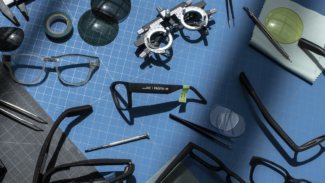Google will begin testing AR glasses prototypes with “in-lens displays, microphones and cameras” in public settings.
A blog posted today by Google alerts the general public to the effort and how it handles data collected by the devices, echoing a similar heads-up provided by Facebook when it launched its Project Aria research.
“We are testing new experiences such as translation, transcription and navigation on AR prototypes. These research prototypes look like normal glasses, feature an in-lens display, and have audio and visual sensors, such as a microphone and camera,” a Google support page notes. “We will be researching different use cases that use audio sensing, such as speech transcription and translation, and visual sensing, which uses image data for use cases such as translating text or positioning during navigation.”
The support page notes that after “the experience is completed, the image data is deleted, except if the image data will be used for analysis and debugging. In that case, the image data is first scrubbed for sensitive content, including faces and license plates. Then it is stored on a secure server, with limited access by a small number of Googlers for analysis and debugging. After 30 days, it is deleted.”
That, too, echoes language from Project Aria where “faces and license plates have been manually blurred using human annotation prior to public release” of a pilot dataset captured from the glasses. The Ray-Ban Stories from Meta/Facebook don’t have a display but capture images and videos with a tiny light indicating capture is active, whereas Google notes an “LED indicator will turn on if image data will be saved for analysis and debugging.” The glasses will be tested with Google employees and “select trusted testers.”
“If a bystander desires, they can ask the tester to delete the image data and it will be removed from all logs,” Google notes. “Testers are prohibited from testing in schools, government buildings, healthcare locations, places of worship, social service locations, areas meant for children (e.g., schools and playgrounds), emergency response locations, rallies or protests, and other similar places.”





